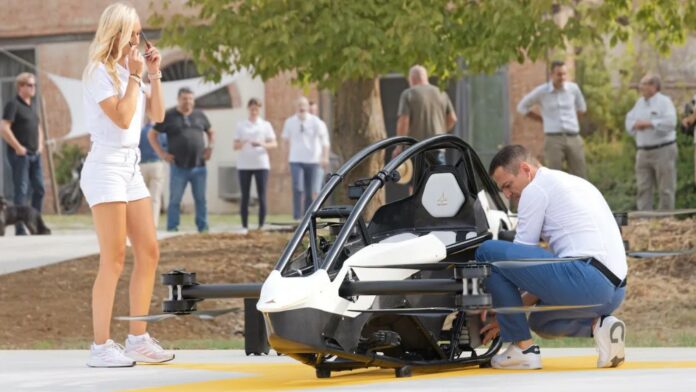Two years ago, Swedish aerospace start-up Jetson unveiled a prototype of its electric vertical take-off and landing aircraft (eVTOL). With the goal of making flight available to everyone, the company has improved its product development and unveils today a consumer-friendly version.
Named Jetson ONE, the helicopter is said to have flied effortlessly over their 800-meter airstrip at the company’s new R&D and limited production facility in Arezzo, Tuscany.
Brought to market last year, the small aircraft features an aluminum and carbon fiber frame as well as eight powerful motors, with enough power to propel passengers at speeds of up to 63 mph.
The manufacturing team has equipped the vehicle with a race-car inspired safety cell that protects the pilot. Furthermore, since it can fly with up to eight motors, it also integrates an auto-land function, to ensure that democratized flight doesn’t come at the expense of safety.
At the manufacturing level, lightweighting was key enabler to this product development. By leveraging AM, the company found that it was able to design some of the eVTOL’s parts to feature hollow structures and very narrow lattice patterns, which are lightweight yet strong enough for sustained flight.
A decision has been made to design a unique exoskeleton safety cell which encloses the pilot’s body entirely. It turned out to be quite a challenge to make it lightweight and strong at the same time. Such roll cages are used in motorsports where they have saved many lives.
‘The jetson ONE is built around a rigid aluminum spaceframe with eight powerful electric motors,’ said Tomasz Patan – founder and technical director. ‘It utilizes composite carbon fiber and cutting-edge 3D printed components, making it an extremely lightweight design. it is also equipped with many safety features including a redundant propulsion system and a ballistic parachute. it is a dream to fly.’
The engineering team also relies on the Lisa X from Sinterit to 3D print the brackets that hold the motor speed controllers and inverters of its personal aircraft in place. The bezel trim for the eVTOL’s instrument cluster, as well as its radar and GPS antenna, also require the use of 3D printing at the fabrication level, as are the test templates used to assemble the vehicle.
Customers interested in ordering a Jetson ONE need to make a down payment of $22,000, before paying another $70,000 once it’s ready for delivery. The company will welcome guests with an assigned chassis number to test-fly the Jetson ONE in April 2023.
Remember, you can post job opportunities in the AM Industry on 3D ADEPT Media free of charge or look for a job via our job board. Make sure to follow us on our social networks and subscribe to our weekly newsletter : Facebook, Twitter, LinkedIn & Instagram ! If you want to be featured in the next issue of our digital magazine or if you hear a story that needs to be heard, make sure to send it to contact@3dadept.com


